After Hurricane Ian swept through Florida, I found myself pondering a simple question as I sat in line for gas. Why do people wait til the last minute to prepare?
Ahead of me, a man was filling his truck up, a few gas cans, his ATVs, and his boat. I just needed gas to get to work in the morning.
I already had gas at home, just in case, but seeing this type of panic at the pump every year still amazes me.
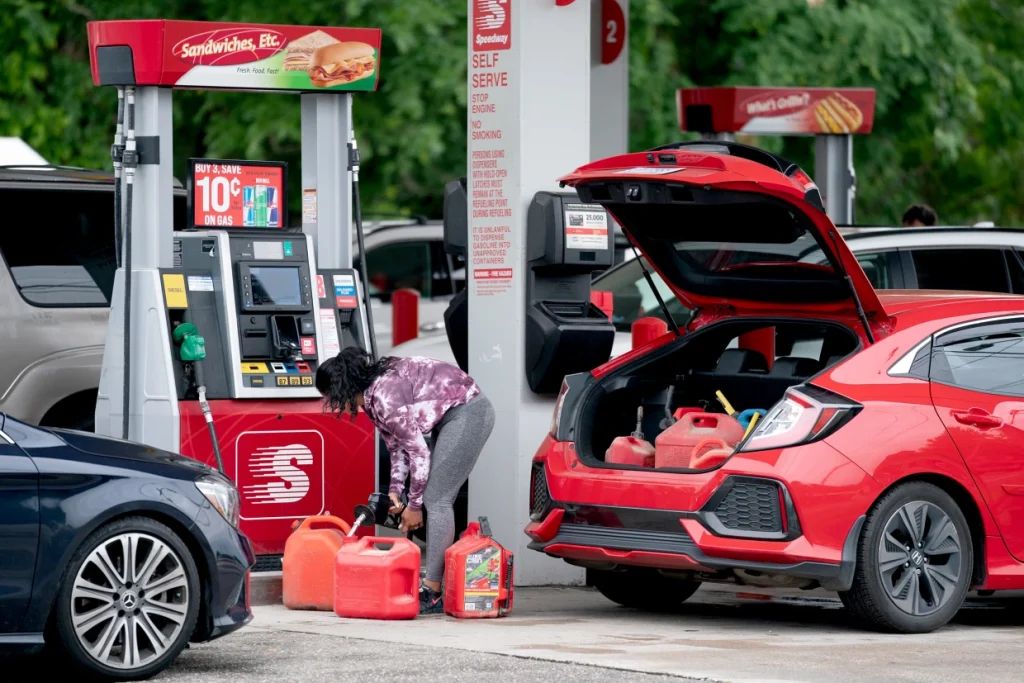
Waiting til the last minute is bad for everyone. You get idiots filling up recreational vehicles and creating a strain on the supply chain.
I’ve been an advocate for storing gas long-term since 2013. Living on the coast in Florida will do that to a man.
Storing gas, diesel, or kerosene is fairly easy, but you must be smart about it. So, let’s talk about what it takes to store gas safely!
Table of Contents
Loading…
Why Should You Store Gas?
I’m sure someone reading this lives in a nice area where hurricanes, tornadoes, blizzards, and floods aren’t an issue for you. I envy you, but for many of us, the loss of power and disaster is only one rough season away.
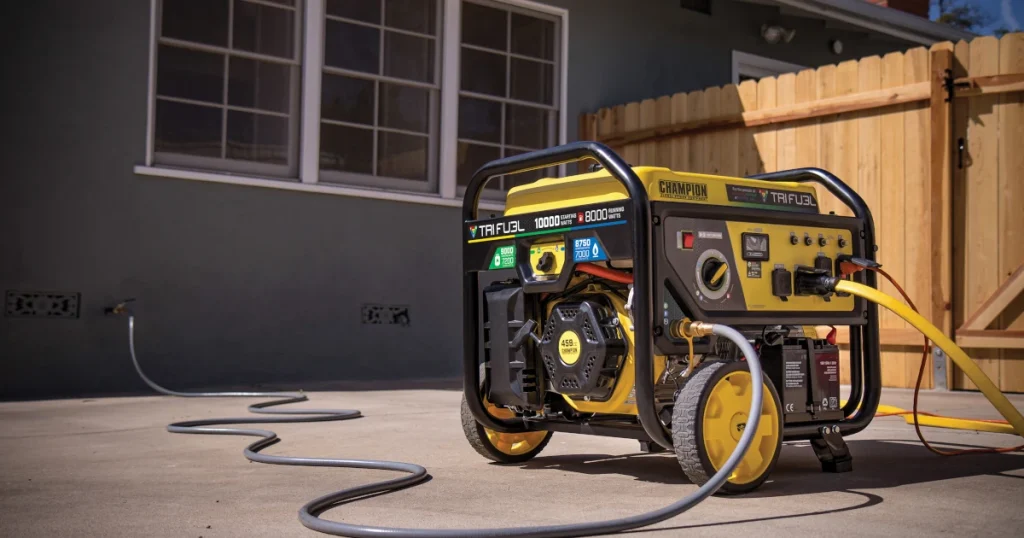
Personally, I store gas for my generator. If the power goes out and it looks like it will be out for a while, I’m firing up my generator and powering my essentials (sorry, PlayStation and TV).
I use a generator for the basics — my water pump, fridge and freezer, and something to cook with if I can’t grill outside. I need this gas on hand because, at this point, it may be unsafe or impossible to go to a gas station, or I may be in a situation where I have to bug out.
How far will I need to go? Well, I might not be sure, so I need something I can fill up a vehicle with and bring with me. Bugging out requires gas unless you want to take the shoelace express.
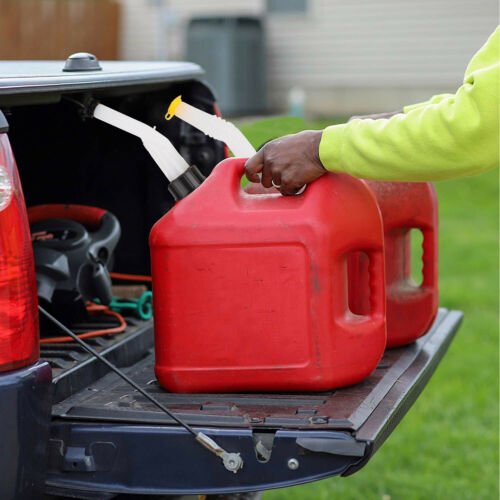
Sure, there might be gas along the way, but any major migration of people is going to drain the areas around the evacuated area of all supplies. This includes fuel.
Gas makes the world go around, so storing gas is no different than storing water.
Types of Gasoline Storage Containers
Ooh, boy, you will see some interesting things when a hurricane comes through. A lot of migration from northern states occurred in my part of Florida. They find some interesting ways to store gas.
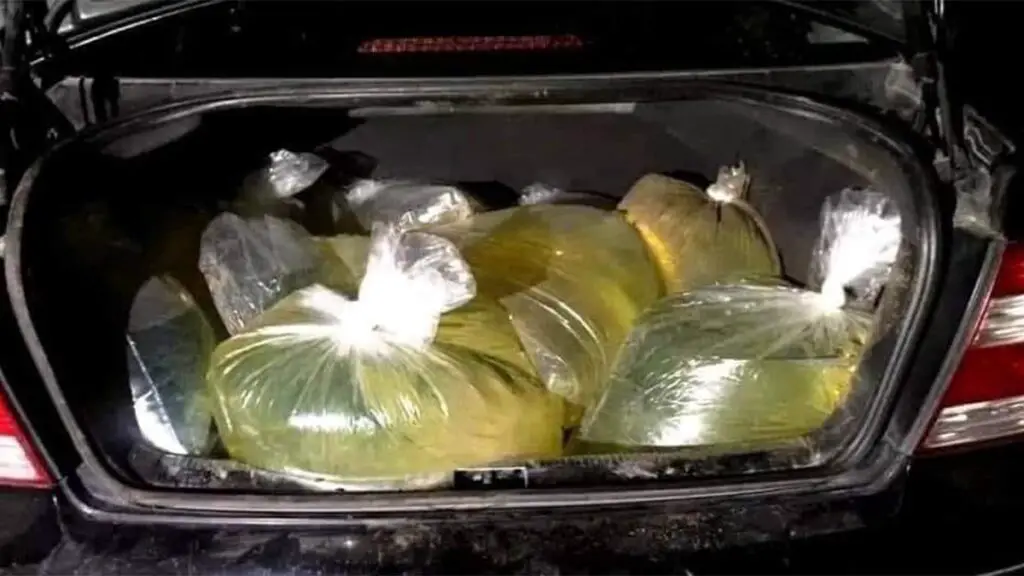
I’ve seen people use those big water jugs that occupy office water coolers, buckets from Home Depot, and sillier stuff. Believe it or not, Tupperware is not a suitable gas storage device.
Gasoline can be pretty abrasive and can melt or dissolve certain plastics. Even if the container doesn’t melt, do you have a plan to get it out?
It’s smart to stick with approved and designed containers to hold your fuel.
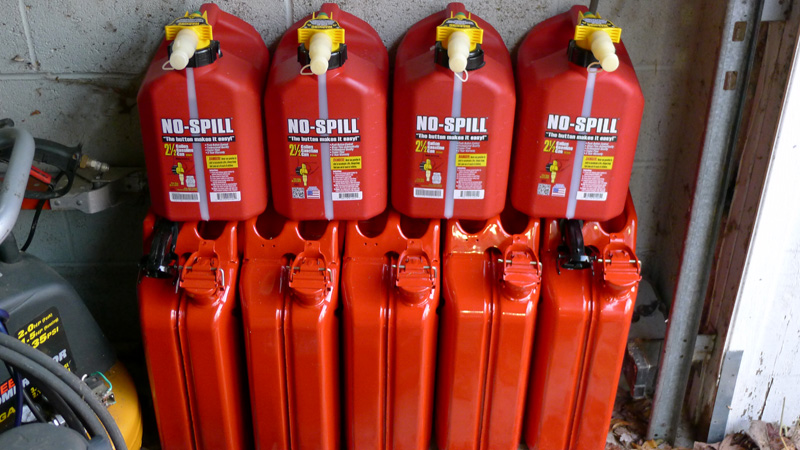
Preparation comes prior to emergencies, so obtaining safe fuel storage containers is a must-have well before the hurricane arrives. There are tons of options. You have everything from the typical five to ten-gallon cans all the way up to big ole barrels.
You have to find what’s right for you. Barrels are great but are huge and heavy; we are talking hundreds of pounds here. Gas weighs 6.3 pounds per gallon, so you might need a team or a forklift to move a 55-gallon drum of gas.
Small Gas Cans
Small cans are convenient, and I think you should have at least a few on hand. Their lightweight and small size make them easy to grab and go with when time matters. They make refilling easy on the fly. However, having 10 5-gallon gas cans can be a hassle; plus, they take up a lot of space, especially in vehicles.
-
25% off all OAKLEY products - OAKLEY25
Copied! Visit Merchant
Gas Caddy
When my dad used to race trucks, I learned about something called a gas caddy. Gas or Fuel caddies are fuel tanks that hold anywhere from 14 to 35 gallons of fuel.
That makes them heavier, but they come with wheels and work like a dolly. These caddies also have a hose and pump installed, so you can easily get the gas from the tank into a generator or vehicle.
-
25% off all OAKLEY products - OAKLEY25
Copied! Visit Merchant
They can be easy to move and easy to refill a tank with. Loading them in a truck might be tough without a partner, but an improvised ramp can make things easier.
Caddies range in price quite a bit, but you can get one for less than $200 if you shop around.
Color Coded Gas Containers: What’s the Difference?
It is important to note that different colored containers mean different things.
Red cans are for gas, yellow for diesel, and blue for kerosene.
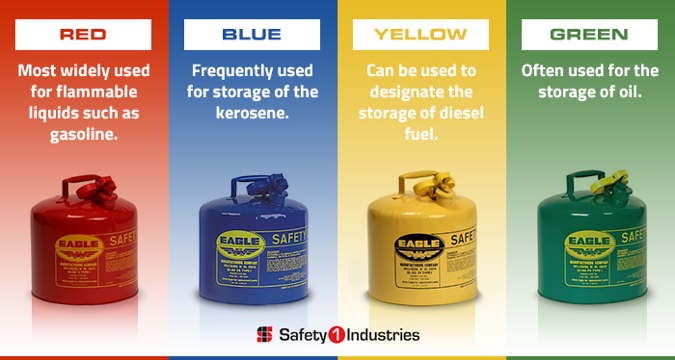
It’s wise to stick to these colors as it’s the most commonly accepted means to differentiate fuel types, lest someone misunderstand your instructions and put diesel in a gas generator.
How To Store Gasoline Safely
Having a container and having gas is most of the equation, but before you go fuel up your containers, let’s plan for where your fuel goes. It goes in the containers…duh.
No, what I mean is, where do you plan to store these containers full of gas? You don’t want to leave these containers in the sun or exposed to the elements — that’s a great way to ruin your fuel.
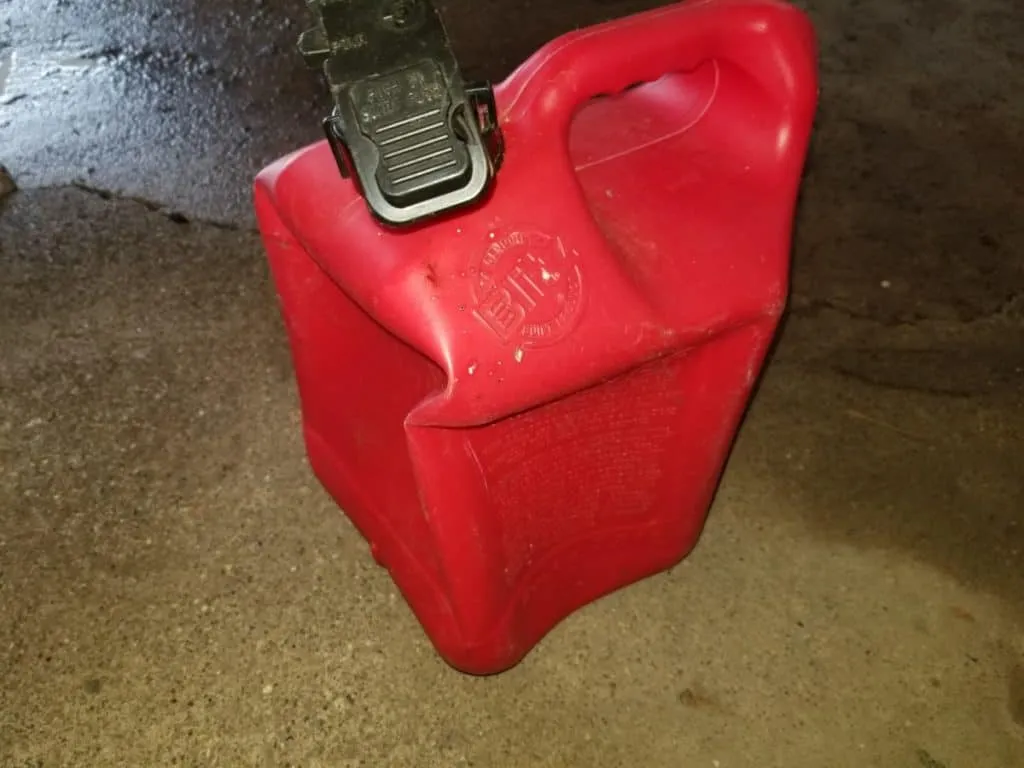
Store your fuel containers in a garage or shed. It needs to be well-ventilated because gas fumes can be harmful. Ensure that the containers are away from any heat sources like space heaters or exhaust pipes.
Keep your containers in mind if you are working near them. Grinding or cutting metal and sending sparks flying toward your fuel isn’t a great idea. Avoid storing your containers on anything that can generate static electricity, like carpets and rugs.
One of the best solutions is to store them in a garage in a flammable safety cabinet. These cabinets are expensive for the everyday prepper, but they may still be worth considering. At the very least, have a fire extinguisher in the area where your fuel is stored.
-
25% off all OAKLEY products - OAKLEY25
Copied! Visit Merchant
How Long Can You Store Gas?
I’m no petroleum engineer, but I know gas can’t be stored forever. It begins deteriorating from day one.
The typical answer is that gasoline usually stores well from six months to a year, depending on storage conditions.
Fuel additives like STA-BIL can keep gas functional for up to two years if mixed properly. Different amounts of gas require more or less stabilizer, so be sure to follow the directions.
-
25% off all OAKLEY products - OAKLEY25
Copied! Visit Merchant
You’ll have to check for swelling, leaks, or container fouling. Fumes may need to be let out if the containers begin to swell.
It’s wise to check once a month at the least. Look for any deformity or container issues, and smell for any leaking gas.
Fuel additives might push your fuel to two years, but I recommend cycling gas at least once or twice a year. Take it and fuel your car up and go! Use it in the lawn mower or weed eater, then replace it with fresh fuel.

It’s my tradition to do it on New Year’s and the first day of Hurricane season. My gas is rarely over six months old. It is probably overkill…or maybe it’s just enough kill.
How Much Fuel Should You Store?
This completely depends on your personal plan. I see the storage of gas to be handy for two main things, running a generator and bugging out.
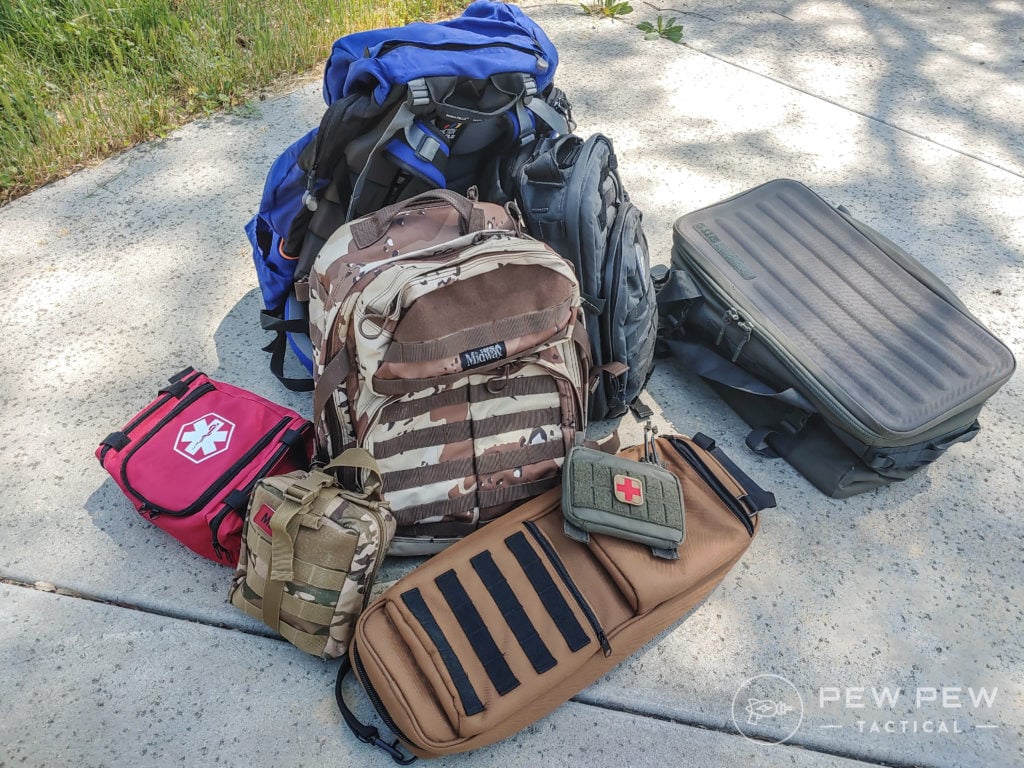
For bugging out, you need to calculate how much fuel you’ll need to get there and get back and plan for enough gas to fill your vehicle from empty.
If you plan to take multiple vehicles, then consider that as well.
When it comes time to power a generator, you need to calculate how much power you’ll need and how much fuel your generator consumes. There are a few calculators online that can help.

My 6,000-watt generator can power my basics fairly easily. My fridge, freezer, and water pump can all be working simultaneously. I can also charge my phones and tablets and run lights carefully without issue.
I know that in doing so that 5 gallons of gas will last me a little bit more than 24 hours. My rule of thumb is 5 gallons every 24 hours just to be safe.

I like to have five days’ worth of fuel in total. Beyond that, things are getting bad enough that it’s time for me to consider relocating if possible.
To figure out that question for you, you’ll need to do the math and make sure it seems reasonable for you and your needs.
Final Thoughts
Having fuel on hand during an emergency can be an absolute must. It can literally be a lifesaver, or at the very least, a venison in my freezer saver.
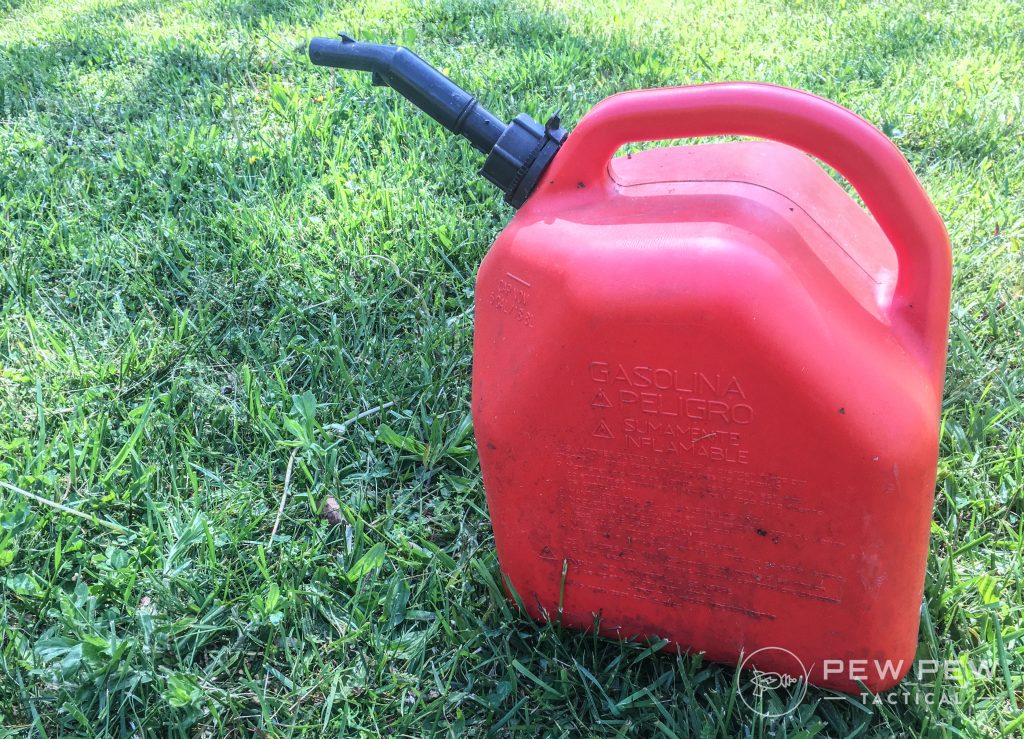
Storing gas isn’t easy, but it can be done without much stress. All it takes is a little forethought into how, where, and for how long you plan to store the gas. Once you have a plan, executing it is easy.
Do you have any tips for storing gas? If so, let us know in the comments below! What about storing water? We got tips on that in the Best Water Storage Containers for Emergencies.

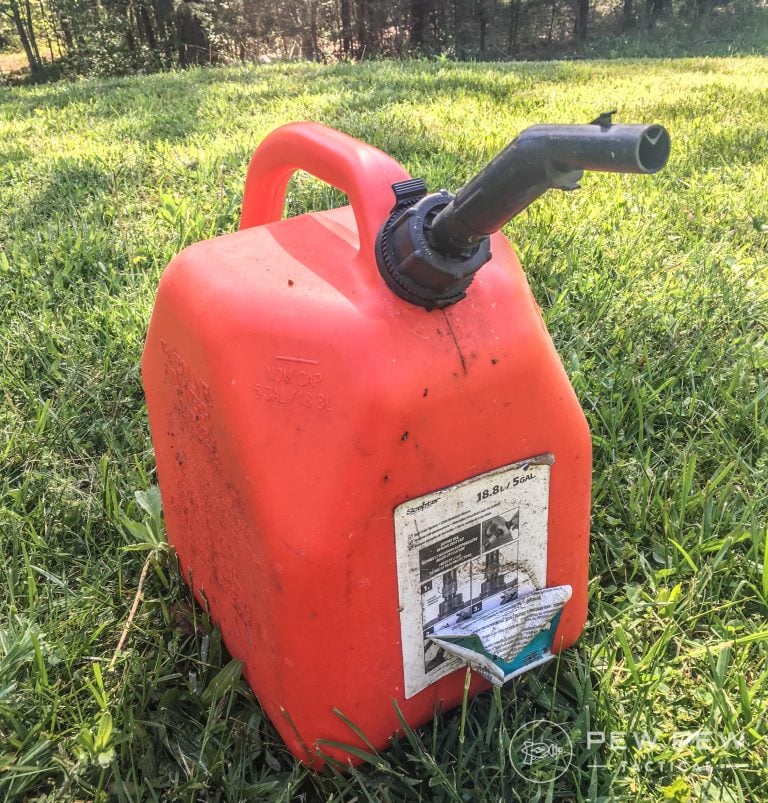
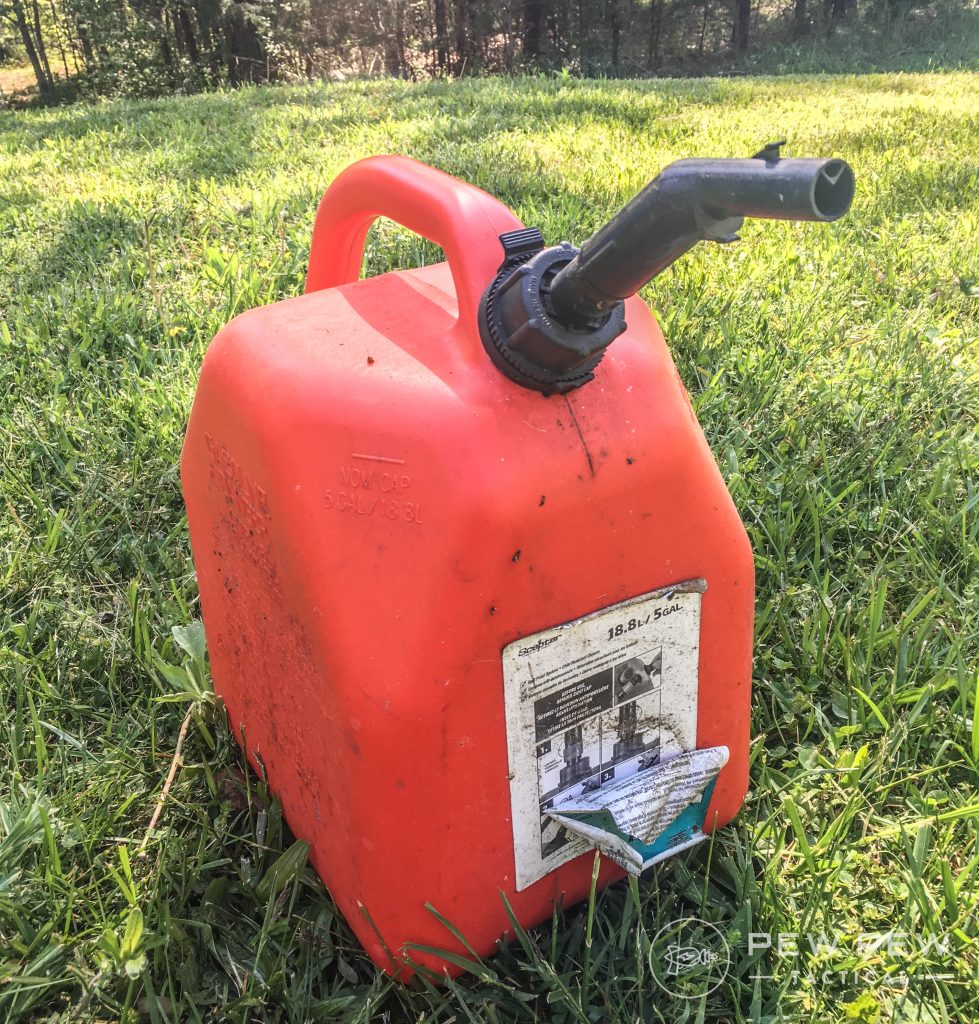











3 Leave a Reply
thanks for info.
Ethanol is another curse from gov't regulations to reduce pollution, which it does not do because it reduces the efficiency of gasoline and does damage to engines that were not designed to run on it, like generators, atv's, boat motors, lawn etc.
If you are going to "store" gasoline, buy unleaded CLEAR with NO ethanol. After 6-months, replace it with fresh gas since gasoline/diesel fuel deteriorates unlike propane.
I've been doing much the same now that I have a genset and having read more than a few threads online in various forums I came to the conclusion its not worth the difficulty in large amounts.
I still have green propane bottles Im using up from a tornado ten years ago - they light up and burn just fine - and there it is: most of my disaster/prepper gear is propane powered. Lantern, stoves, catalytic heater. All I really need is a propane conversion for the genset, which are widely available. Had it not been an impulse purchase (dirt cheap surplus house bargain for a Briggs set) I would have gotten dual fuel.
Powered off a normal gas grille jug available just about anywhere it will store longer and run much cleaner - less risk of fumes. Larger RV bottles are available, too which would really be the companion source. Kept in a separately stored "tool shed" and operated from there separate from the house by the necessary gap it would be an easy step up to back up power. Taking it on the road, same, grill gas bottles are easier to handle, no spilling, and you get a reconditioned tank every time - or refill your new one at quite a few places.
Plus, it makes it a lot easier to roll that genset around empty, then bring the tank to it.
For most of our use locally a few days is pretty long - and refueling doesn't require shutting down for a long cool off to keep a liquid fuel catching fire.
YMMV, it's a viable option for long term clean storage with no fuel degradation.